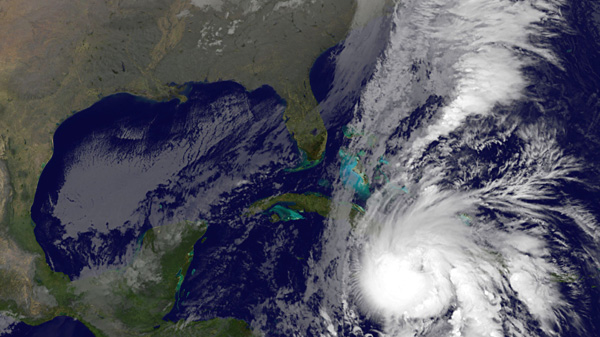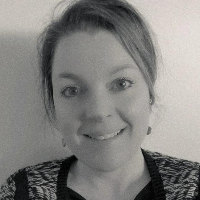 |
| Dr Ryerson Christie |
In conversation with Dr Ryerson Christie, theme lead at the Cabot Institute
Why did you choose to become a theme leader at Cabot Institute?
Obviously with a decision such as this, there are numerous reasons informing our choices. However, there are three specific factors that were central to my agreeing to take this on. First, and foremost, I am passionate about the theme. Secondly, I have personally benefited from the work of the Cabot Institute, and as such I feel a responsibility to contribute back to the research institute. Finally, while I have always seen value in interdisciplinarity, my own research on disasters has convinced me of the fundamental importance in increasing the ties between academic disciplines. I should add as well that I would not have agreed to take on this role if I didn’t enjoy the people I am able to work with.
In your opinion, what is one of the biggest global challenges associated with your theme?
There are a multitude, and identifying one is difficult. The nature of our area of focus, on natural hazards and disasters, means that we are dealing with the complex interface between geophysical processes, a changing climate, and societies. Work across the working group relates to everything from seeking to better understand the science behind natural hazards, to how we can better design and maintain physical infrastructure, to how states and communities can reduce the potential impact of hazards. However, if I have to pick one specific global challenge, it is how we can ensure that development can take place in a way that reduces vulnerabilities in a way that privileges the local voices in these paramount policy decisions.
As we are looking into the future, what longer term projects are there in your theme?
In a way that longer term projects that we will be undertaking in the years to come are no different from the ones in which we are currently engaged. However, the impact of climate change is going to make the importance of these issues all the more acute. So, we will be exploring in greater depth the intersectionality of vulnerabilities to disasters, expanding our geographic focus, and seeking further interdisciplinary approaches to these questions.
We have a number of ongoing research projects across Bristol, and I will note a few here:
Tomorrow’s Cities – The University of Bristol has a central role in this Global Challenges Research Fund (GCRF) Hub project, which is working with partners in Istanbul, Nairobi, Kathmandu, and Quito. The aim is to better understand disaster risk in the rapidly urbanising environment with the aim to ensure that future city development is resilient and addresses underlying drivers of disaster risk.
UK Flood Impacts project – This project is seeking to produce more accurate projections of the nature of UK flood risk which is crucial to ensure that policy decisions on mitigation, adaptation and development are fit for purpose.
Helping East Africa get Earthquake-Ready – focused on the East African Rift, this project is seeking to develop usable risk assessment tools to assist Malawi in disaster preparedness. The project will also work with local authorities to co-produce planning guidelines to ensure development is resilient. A new statistical tool is being developed to help identify and help the most vulnerable sectors of society within disaster effected states.
Across the portfolio of projects in your theme, what type of institutions are you working with? (For example, governments, NGO’s)
The work that has been taking place within the hub has been extraordinary in the breadth of partners involved in the activities. Crucially, the work is not only about targeting and helping states and communities, but it is motivated by a drive to empower communities and governments in alleviating disaster risk. This means that the range of partners are actively involved in the entire life cycle of projects, from the identification of problems, co-designing research projects, the collection, interpretation and writing up of research, and the development and implementation of policy. We actively work with local communities, social movements, and Non-Governmental Organizations (both local and international), all levels of Government, as well as regional and international organizations.
Please can you give some examples and state the relevant project
Tomorrow’s Cities is an exemplar here, where we are partners include community groups and formal NGOs in Quito, academics at FLACSO, the Instituto Geofisico, local and city level government representatives, and professional bodies representing engineers. Without bringing all of these actors together we would not be able to fully appreciate the complexity of the problems, let alone develop and implement effective policies to reduce disaster risk.
What disciplines are currently represented within your theme?
We have been drawing on a broad range of disciplines, including Economics, Modern Languages, Sociology, Politics, Law, History, Civil Engineering, Geography, and the Earth Sciences.
In your opinion, why is it important to highlight interdisciplinary research both in general and here at Bristol?
The only way to redress the complex problems posed by natural hazards, is by bringing together the skills and expertise across the breadth of academia. We can not bring about positive change by working in silos, and interdisciplinarity, while sometimes difficult, is fundamental. We all come at the problems with different perspectives, tools and indeed language. But we are all working for the same common ideal, of improving the lives of people, of reducing disaster risk, and doing so in a way that is empowering and sustainable.
Are there any projects which are currently underway in your theme which are interdisciplinary that you believe should be highlighted in this campaign?
All of our projects are interdisciplinary to one degree or another. To highlight one in this respect is very difficult. I suppose, if pushed, I would point to the work of the Tomorrow’s Cities team. I would also like to highlight a previous project, BRACE, which was innovative in its integration of history, seismology, education, and engineering in a focused project seeking to increase resilience to Earthquakes in Bhutan.
Is there anything else you would like to mention about your theme, interdisciplinary research and working as part of Cabot Institute?
As with other working groups, our activities crosscut the breadth of Cabot and drawing lines between this working group and others is exceptionally difficult. Cabot has been a fantastic catalyst to our work, and it is likely that little of these endeavours would have been possible without the support of the research institute.
For more information, visit Natural Hazards and Disaster Risk.


.jpg/800px-Flickr_-_DVIDSHUB_-_USS_Iwo_Jima_assists_Haiti_after_Hurricane_Tomas_(Image_1_of_7).jpg)

